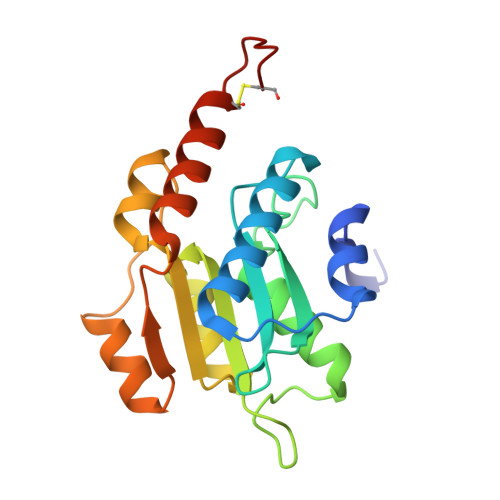Structure guided mutagenesis reveals the substrate determinants of guanine deaminase.
Singh, J., Gaded, V., Bitra, A., Anand, R.(2021) J Struct Biol 213: 107747-107747
- PubMed: 34010666
- DOI: https://doi.org/10.1016/j.jsb.2021.107747
- Primary Citation of Related Structures:
7C3S, 7C3T, 7C3U - PubMed Abstract:
Guanine deaminases (GDs) are essential enzymes that regulate the overall nucleobase pool. Since the deamination of guanine to xanthine results in the production of a mutagenic base, these enzymes have evolved to be very specific in nature. Surprisingly, they accept structurally distinct triazine ammeline, an intermediate in the melamine pathway, as one of the moonlighting substrates. Here, by employing NE0047 (a GD from Nitrosomonas europaea), we delineate the nuance in the catalytic mechanism that allows these two distinct substrates to be catalyzed. A combination of enzyme kinetics, X-ray crystallographic, and calorimetric studies reveal that GDs operate via a dual proton shuttle mechanism with two glutamates, E79 and E143, crucial for deamination. Additionally, N66 appears to be central for substrate anchoring and participates in catalysis. The study highlights the importance of closure of the catalytic loop and of maintenance of the hydrophobic core by capping residues like F141 and F48 for the creation of an apt environment for activation of the zinc-assisted catalysis. This study also analyzes evolutionarily distinct GDs and asserts that GDs incorporate subtle variations in the active site architectures while keeping the most critical active site determinants conserved.
Organizational Affiliation:
Department of Chemistry, Indian Institute of Technology Bombay, Mumbai, Maharashtra 400076, India.

















